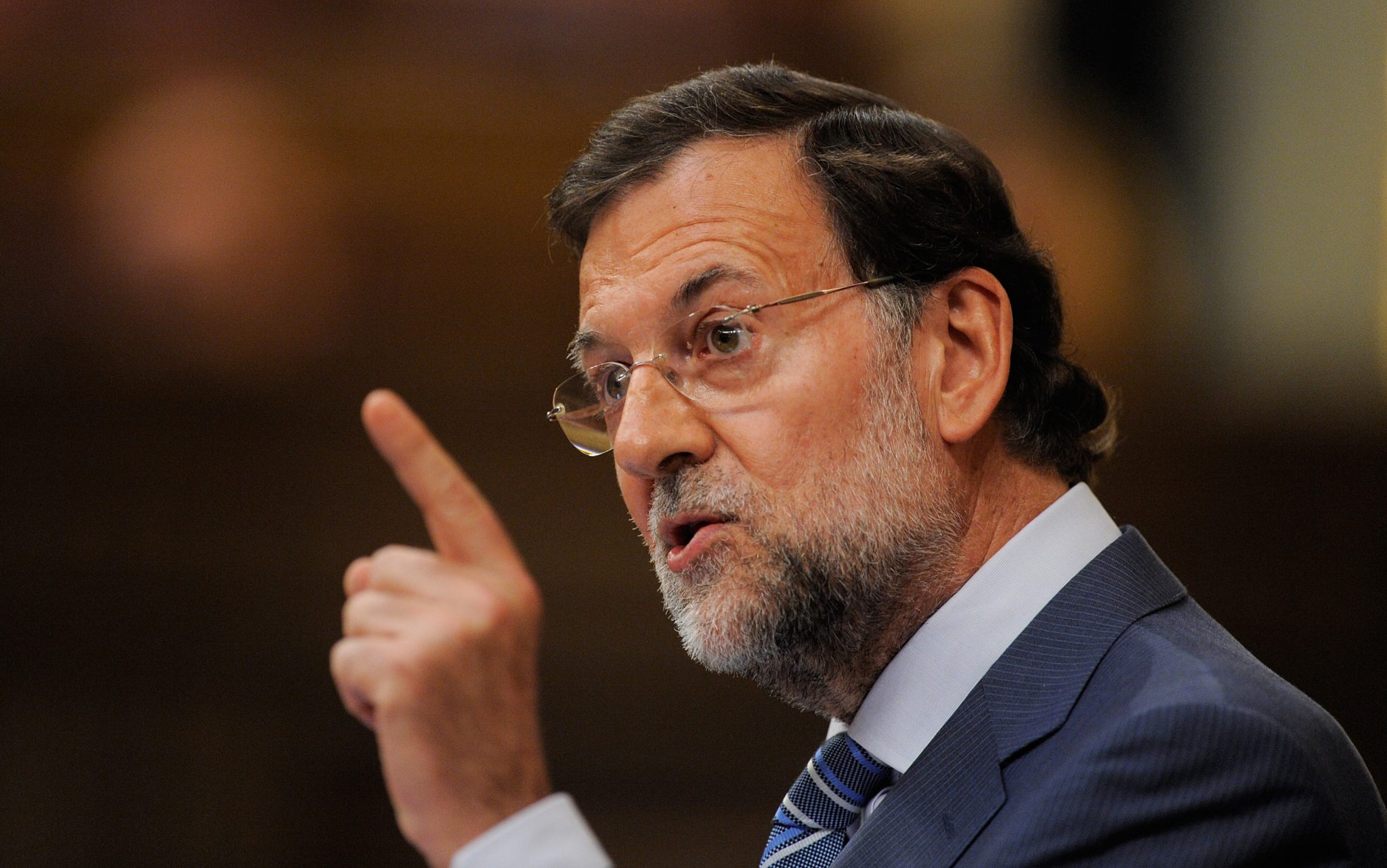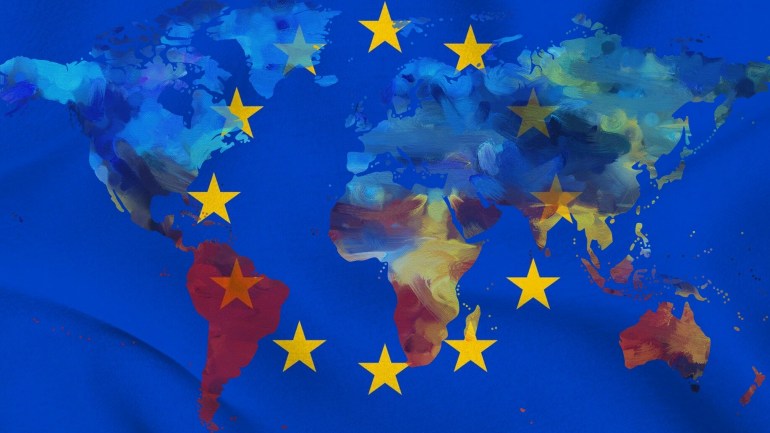
Spaniards will head to the polls on Sunday in what is easily the most unpredictable Spanish general election in decades. Open Europe’s Vincenzo Scarpetta previews this unprecedented four-way race, looking at the key issues at stake and the possible post-election scenarios.
Spain, where absolute majorities have become a mirage
In no other European country has the political landscape changed so quickly and radically as in Spain. The sudden entry on the scene of Podemos and Ciudadanos (whose trajectory I have been monitoring closely, see here and here) has added a fair bit of drama to the Spanish general election that will take place on Sunday – making it the most awaited and unpredictable in decades.
Let me be clear: I do not believe the two traditional parties – Prime Minister Mariano Rajoy’s centre-right Partido Popular (PP) and the Socialist Party (PSOE) led by Pedro Sánchez – are at risk of extinction, or anything near that. The Spanish electoral system tends to over-represent smaller towns vis-à-vis big cities. Support for traditional parties remains strong in the former, where newcomers are still struggling.
Therefore, I would expect both PP and PSOE to do reasonably well overall. However, as the raft of local and regional elections earlier this year unequivocally showed, neither of the two traditional parties is strong enough to secure an outright majority on its own. Bear in mind that, in the 2011 general election, PP and PSOE together won over 73% of the nationwide vote. This is expected to go down to anywhere between 45% and 50% in this general election.
The number of surveys coming out of Spain over the past few weeks has been absolutely overwhelming. Below is a very useful ‘poll of polls’ compiled by El Español.

Results can vary more or less significantly depending on the pollster, but the key conclusion seems to be that Spain will come out of this general election with a hung parliament – and with no single party getting even close to an absolute majority, for which 176 of 350 seats are needed. Pacts will be necessary to avoid Spain entering a period of political instability.
An election campaign largely dominated by the economy…
Somewhat predictably, the election campaign has focused a lot on the government’s economic record – particularly with regard to unemployment.
As is usually the case, the reality is a mixed bag.
There are indeed fewer Spaniards out of work now than when Rajoy took over power four years ago. However (see here for a more detailed analysis), data shows that the active population – people in work or actively looking for employment – has shrunk over the same period of time, and so has the number of employed people. Furthermore, there are fewer Spaniards on permanent contracts and in full time jobs, and more on temporary contracts and in part-time jobs – which raises questions over the quality of the jobs that are being created. Perhaps most worryingly, the number of long-term unemployed – people out of work for one year or more – has also gone up under Rajoy’s government.
Spain is indeed among the fastest-growing economies in the EU. However, over the past two years the recovery has been exclusively driven by domestic demand – as shown by this graph from the Spanish national statistics office INE.

As such, doubts remain over whether the recovery is sustainable in the longer term in a country where, according to the IMF, private debt is projected to remain above 200% of GDP until at least 2020.
Finally, progress has been made in cutting deficit – it stood at 9.5% of GDP at the end of 2011 – but Spain’s public debt has increased significantly under Rajoy’s government and is inching closer to 100% of GDP.
So what are the key economic proposals put forward by the main parties? Here is a quick overview.
PP – As the ruling party, it is essentially betting on continuity – namely on fiscal policy. Its electoral manifesto stresses how the government cut income tax during its term in office, and has already adopted legislation that would cut the basic corporate tax rate from 30% to 25% as of next year. However, in spite of announcements made by Rajoyduring the election campaign, the manifesto stops short of explicitly envisaging further tax cuts over the next four years. As regards jobs, the party has pledged to bring the number of employed people up to 20 million in 2020 (there are currently slightly over 18 million). It would introduce tax rebates for companies that hire young people and would pay special attention to getting long-term unemployment back to work – although the manifesto remains pretty vague on what measures would be adopted to achieve the latter.
PSOE – It would respect Eurozone fiscal rules, but would try to negotiate looser deficit targets for the coming years. It would also seek to amend the balanced budget rule introduced in the Spanish Constitution in 2011 – with the backing of the Socialist Party – to make it more flexible. Importantly, Socialist Party leader Pedro Sánchez has said he would scrap the labour market reform passed by Rajoy’s government. Another flagship proposal is to increase the monthly minimum wage from the current €649 to €1,000 over two parliamentary terms.
Ciudadanos – It would respect Eurozone fiscal rules, but would ask the European Commission to slightly relax the deficit target for next year. Similar to what Matteo Renzi has done in Italy, Ciudadanos is proposing introducing a single open-ended contract whereby newly-hired employees would gain full protection rights gradually over time – as a way to address the duality of the Spanish labour market. The party is also in favour of a state-funded salary top-up for low earners – along the lines of UK tax credits. Ciudadanos would cut both income and corporate tax beyond what PP has done.
Podemos – It would boost public spending by over €130bn from current levels during the next parliament and public revenue by €150bn over the same period. Fiscal consolidation would be clearly slower, as public deficit would be brought below 3% of GDP in 2018 – while PP is planning to do so next year. Income tax would be raised for higher earners – with the top marginal rate set at 55% for people earning over €300,000 a year. The basic corporate tax rate would be kept at 30%. Podemos would scrap Rajoy’s labour market reform. However, the party appears to have dropped some of its most radical economic proposals – notably including the citizens’ audit of Spanish public debt and debt restructuring.
…and Catalonia
Almost inevitably, the other big issue of the election campaign has been how to handle the situation in Catalonia. Without re-hashing what I wrote in previous blog posts (seehere and here), things are still looking pretty confused. The bottom line is that, while they all oppose Catalan plans for a unilateral declaration of independence, the four main parties have different solutions in mind – with Podemos being the only one prepared to offer Catalan voters an amendment to the Spanish Constitution so that they can hold a binding independence referendum. Perhaps the biggest risk is that the fragmented Spanish parliament that looks likely to come out of this general election could struggle to reach a common position – which in turn could further exacerbate tensions between Madrid and Barcelona.
What are the possible post-election scenarios?
Spain has never before been in a situation where four parties all look set to win a significant number of seats in parliament. This makes it especially difficult to predict what shape the next Spanish government could take. The sizeable chunk of undecided voters (25% according to the latest Metroscopia survey published by El País on Monday) is another important factor to keep in mind.
Generally speaking, I believe Spain is more likely to end up with a one-party minority government with ad hoc support from another party, than a fully-fledged coalition.
Based on recent opinion polls, PP would finish in the lead – albeit short of an outright majority – and would therefore very likely get a first shot at trying to form a government. It is fair to say a German-style grand coalition between PP and PSOE would be unviable, and so would be a pact between Rajoy’s party and Podemos.
This essentially means all eyes would be on Ciudadanos – the ‘kingmaker in waiting’ of this general election.
PP and Ciudadanos could find common ground on economic policies, and share similar views on Catalonia. However, I can see two potential obstacles to a deal. First, Ciudadanos leader Albert Rivera has been putting a lot of emphasis on the need for ‘democratic regeneration’. How would he explain to his voters the decision to work with a PP government led by Rajoy – who, by definition, embodies continuity with the past? Indeed, Rivera could demand that Rajoy make way to someone else (e.g. Deputy Prime Minister Soraya Sáenz de Santamaría) as a pre-condition for his backing – but that would likely complicate the talks further. Second, Rivera has said several times that he does not want to “end like Nick Clegg”. Therefore, he would probably think twice before granting support to PP unless he believes he has a real chance of influencing policy. In other words, I believe a too wide gap in seats between PP and Ciudadanos could make systematic cooperation between the two more difficult.
The alternative would be a PSOE-Ciudadanos pact. Not a far-fetched prospect, given that the two parties are already working together at the regional level (think Andalusia). The advantage for Ciudadanos would be that, compared to PP, the Socialist Party has undergone a somewhat greater renewal – including a youthful new leader, former basketball player Pedro Sánchez. However, the two parties look quite distant on economic policy – particularly as regards the strategy to fight unemployment. Furthermore, Sánchez has spent most of the campaign trying to push Ciudadanos away from the political centre – where elections are historically won or lost in Spain – by repeatedly labelling Rivera as “right-wing”. Would Socialist voters be happy about their leader striking a deal with a man of the right? The other big question is obviously whether PSOE and Ciudadanos together would win enough seats to muster a majority in parliament. Most opinion polls suggest they would not.
That would basically mean the two parties would also have to seek some form of support from Podemos. Unsurprisingly, Rajoy has indeed evoked the possibility of PSOE, Ciudadanos and Podemos joining forces in an anti-PP bloc – similar to what happened to his fellow centre-right leader Pedro Passos Coelho in Portugal. However, I would be inclined to say this is unlikely to happen. Ciudadanos and Podemos, for instance, agree on the need for a clean-up of Spanish politics – but they are polar opposites on the economy and Catalonia, to mention but two pretty major issues. In addition, Podemos is possibly the party that stands to gain the most from sitting this hand out and staying in opposition.
Finally, a very hypothetical scenario at this stage – but what would happen if no government could be formed? According to the Spanish Constitution, the King designates the new Prime Minister after consulting all parties that won seats in parliament. The new Prime Minister-designate then has to face a vote of investiture in the lower chamber of the Spanish parliament. If the first vote is lost, the Constitution gives a maximum of two months to keep trying. After that, the King must dissolve parliament and call a new election.
The truth is there is no easy option on offer. This is pretty much uncharted territory for Spanish politics. The obvious risk is that Spain ends up with a weak government – far from ideal for a country that is looking to consolidate a much-awaited recovery.
- This article first appeared on Open Europe



